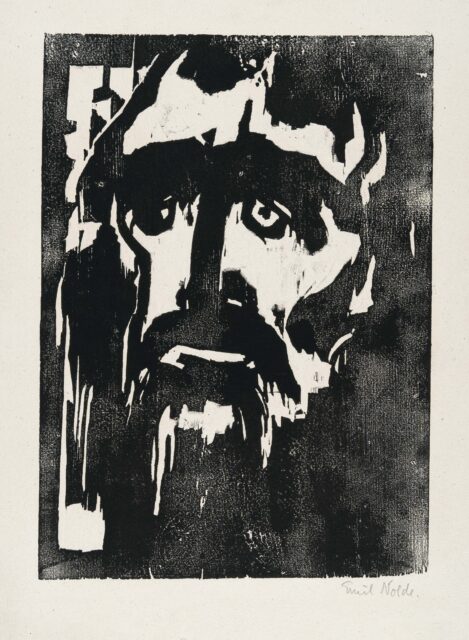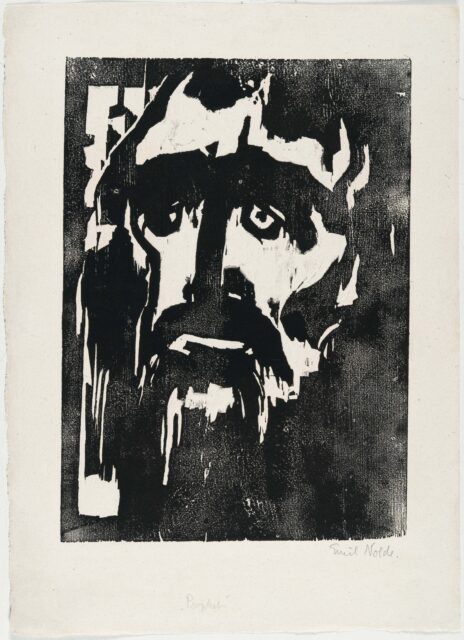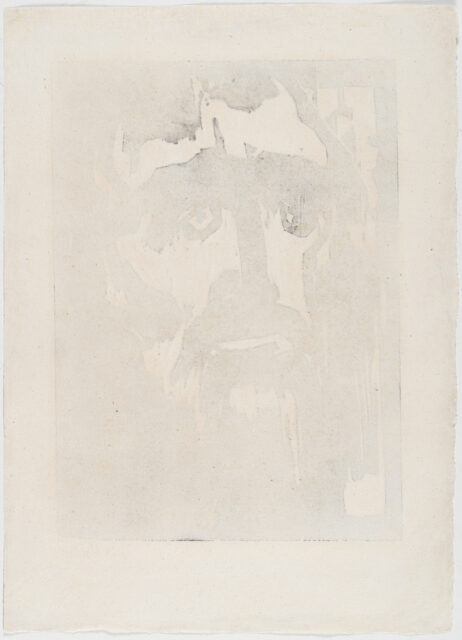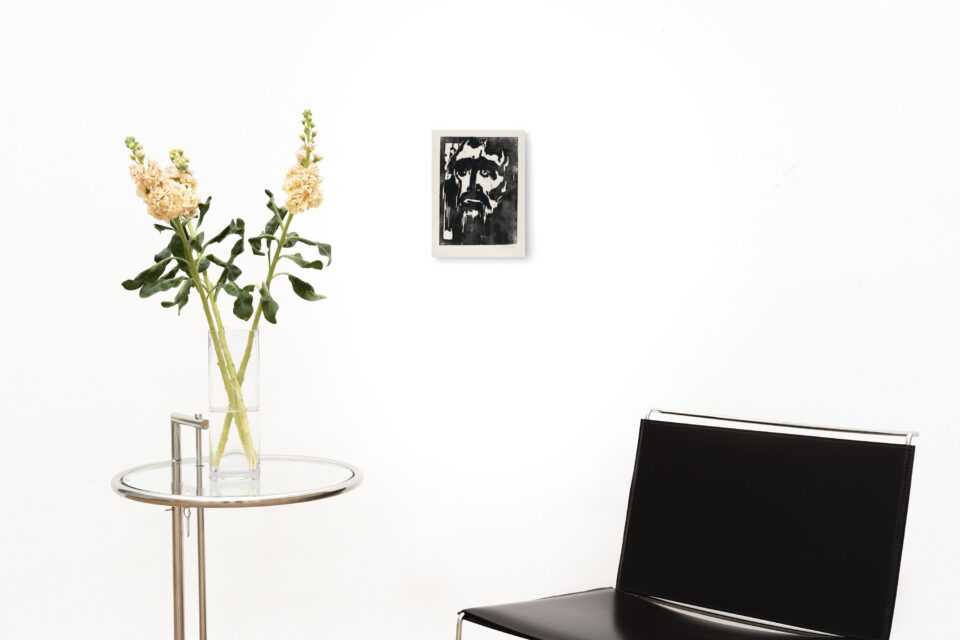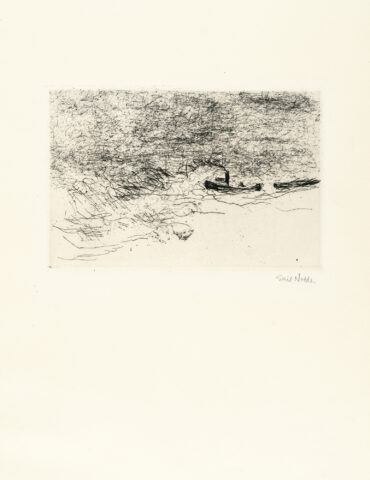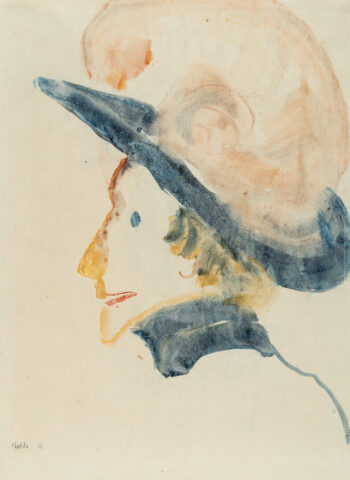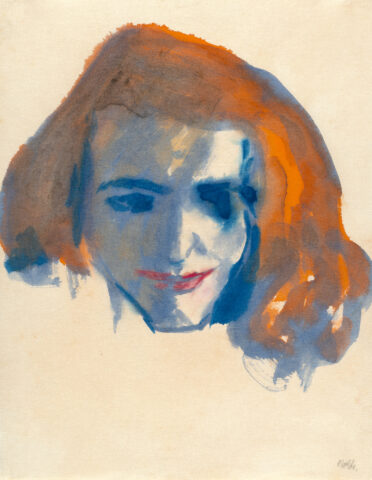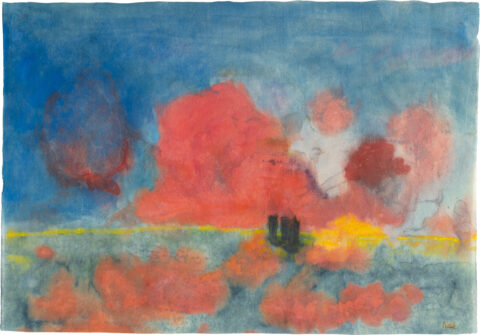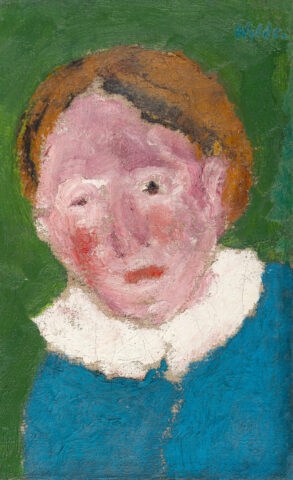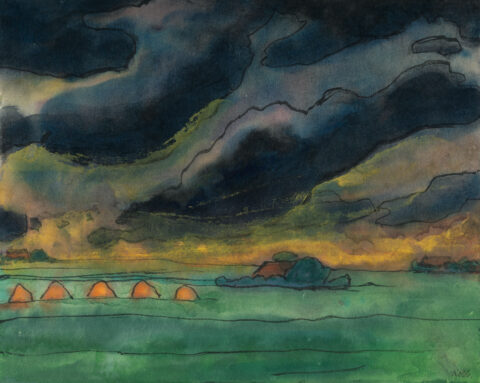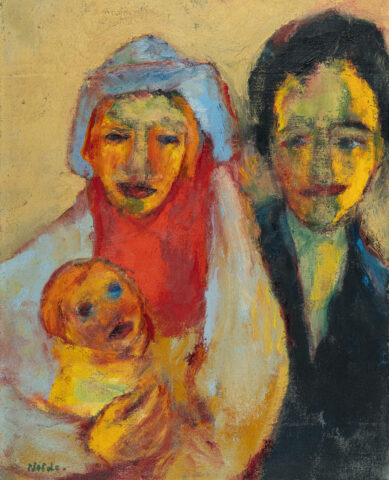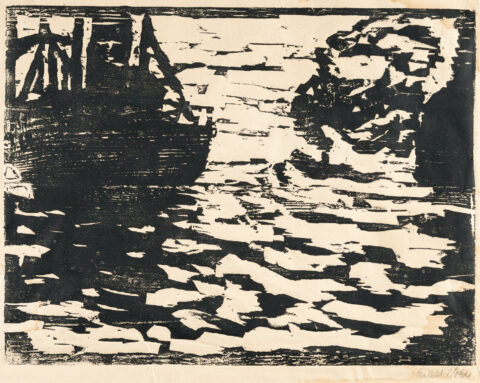
The prophet
Details
Titled by an unknown hand lower centre.
Schiefler/Mosel/Urban H 110.
Provenance:
Private property, USA.
Descrizione
– Emil Nolde’s most important woodcut and one of the most important prints of German Expressionism
– Haunting portrait with “dramatic visionary expression”
– Striking effect due to strong black and white contrast
Emil Nolde’s training as a wood sculptor and carver gave him a special access to the panel as a material. His early years of travelling after his apprenticeship also took him to Munich, Karlsruhe and Berlin as a carver, before he slowly developed into a freelance painter through drawing courses and employment as a drawing teacher. It is therefore not surprising that, alongside the etching technique, the woodcut became Nolde’s favourite medium for printmaking, as it was the woodcutting technique with which he was deeply familiar. Nolde draws the motif on the wooden panel with a broad ink brush and then carves out the image with a knife. Three preparatory ink brush drawings on paper have survived for the woodcut of the prophet. “But the translation into the material of the panel gives the image a different, new reality. The structure and life of the wood become part of the image, the working process is also included, the cutting of the stick, the resulting splinters, ridges, bays and islands; it is only in the woodcut that the prophet’s head receives its dramatic visionary expression.” (Martin Urban, in: WVZ, vol. II, p. 11f.). 1912 was a particularly creative year for Nolde with regard to woodcuts. He created around 20 portrait heads, among which the “Prophet” stands out in particular thanks to its haunting effect and is probably one of the artist’s best-known prints. Ernst Gombrich describes the “Prophet” in his “History of Art” as “an apt example of the strong, almost poster-like effect” of Expressionist graphic art. It is “no longer a question of having a decorative effect. Their simplification was intended entirely to serve expression, and so everything is centred around the ecstatic gaze of the excited seeker of God.” (Gombrich, p. 567).
* Tutte le informazioni includono la commissione a carico dell'acquirente (27%) senza IVA e senza garanzia. Salvo errori.
** Tutte le informazioni più la commissione a carico dell'acquirente e l'IVA e senza garanzia. Salvo errori.
*** Con riserva: L'offerta è stata accettata al di sotto del limite. L'acquisizione dell'opera potrebbe essere ancora possibile nella nostra vendita post-asta.
R = Le opere d'arte regolarmente tassate
N = Opere d'arte soggette a tassazione differenziata e provenienti da un paese non UE
Non è consentita la riproduzione e la distribuzione privata o commerciale di tutte le illustrazioni delle opere esposte nell'archivio della mostra e dell'asta. Tutti i diritti riservati.


